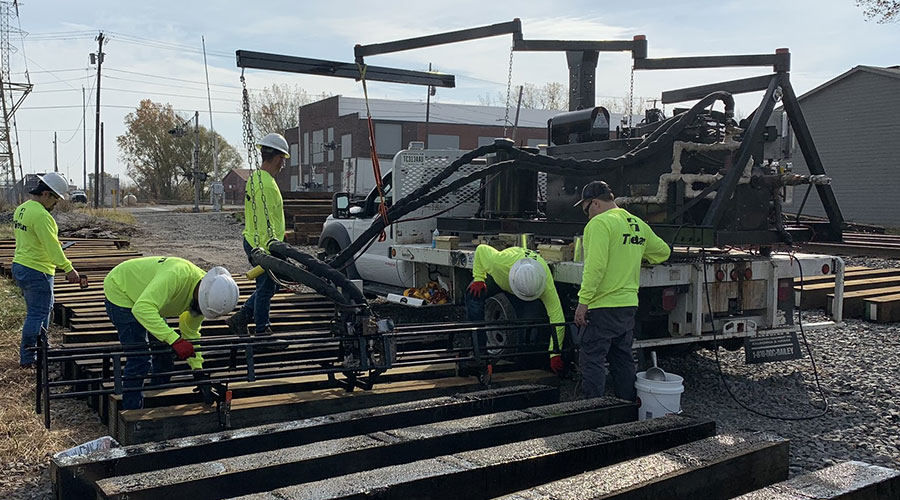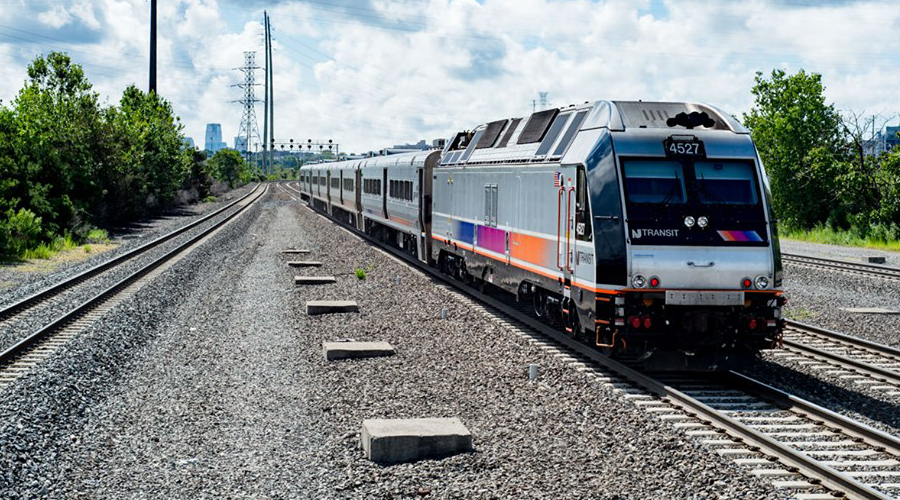Newsletter Sign Up
Stay updated on news, articles and information for the rail industry
Stay updated on news, articles and information for the rail industry
 railPrime
railPrime
RAIL EMPLOYMENT & NOTICES
Rail News Home
Rail Industry Trends
Rail News: Rail Industry Trends
4/4/2011
Rail News: Rail Industry Trends
Cold Train eyes expansion after reaching one-year mark
advertisement
The Pacific Northwest-to-Chicago Cold Train intermodal service recently marked its first anniversary.
Now managed by CTI Freight Systems, the express service was launched in April 2010 through a partnership between Rail Logistics, the Port of Quincy, Wash., Columbia Colstor Inc. and LaGROU Distribution, then spun off from Rail Logistics to CTI Freight Systems in December 2010. The refrigerated intermodal container rail and distribution service operates between Quincy and Chicago five days per week to transport fresh or frozen produce destined for the Midwest.
The service features 53-foot refrigerated containers originating from the Port of Quincy’s intermodal terminal and moved eastbound on non-stop, double-stacked BNSF Railway Co. trains. Transit time is less than four days, which is much faster than typical refrigerated box-car service that can take up to two weeks, and on par with typical truck service, according to CTI Freight Systems.
Since the beginning of 2011, eastbound Cold Train shipments of produce such as apples and potatoes have doubled, and westbound shipments of cargo from Chicago to Washington state have increased by several hundred percent, said Steve Lawson, Cold Train’s vice president of intermodal, in a prepared statement.
"We expect 300 percent growth this year over the operation in 2010," said Chris Mnichowski, owner and president of CTI Freight Systems.
The Cold Train plans to launch service from Quincy and Chicago into southeastern U.S. markets later this year.
“As the Cold Train service continues to grow, we plan on providing service to areas such as Atlanta and Florida, and then pivoting to Northeast markets in the future, and eventually to the California market," said Mnichowski.
Now managed by CTI Freight Systems, the express service was launched in April 2010 through a partnership between Rail Logistics, the Port of Quincy, Wash., Columbia Colstor Inc. and LaGROU Distribution, then spun off from Rail Logistics to CTI Freight Systems in December 2010. The refrigerated intermodal container rail and distribution service operates between Quincy and Chicago five days per week to transport fresh or frozen produce destined for the Midwest.
The service features 53-foot refrigerated containers originating from the Port of Quincy’s intermodal terminal and moved eastbound on non-stop, double-stacked BNSF Railway Co. trains. Transit time is less than four days, which is much faster than typical refrigerated box-car service that can take up to two weeks, and on par with typical truck service, according to CTI Freight Systems.
Since the beginning of 2011, eastbound Cold Train shipments of produce such as apples and potatoes have doubled, and westbound shipments of cargo from Chicago to Washington state have increased by several hundred percent, said Steve Lawson, Cold Train’s vice president of intermodal, in a prepared statement.
"We expect 300 percent growth this year over the operation in 2010," said Chris Mnichowski, owner and president of CTI Freight Systems.
The Cold Train plans to launch service from Quincy and Chicago into southeastern U.S. markets later this year.
“As the Cold Train service continues to grow, we plan on providing service to areas such as Atlanta and Florida, and then pivoting to Northeast markets in the future, and eventually to the California market," said Mnichowski.


 2025 MOW Spending Report: Passenger-rail programs
2025 MOW Spending Report: Passenger-rail programs
 Gardner steps down as Amtrak CEO
Gardner steps down as Amtrak CEO
 Guest comment: Oliver Wyman’s David Hunt
Guest comment: Oliver Wyman’s David Hunt
 Women of Influence in Rail eBook
Women of Influence in Rail eBook








